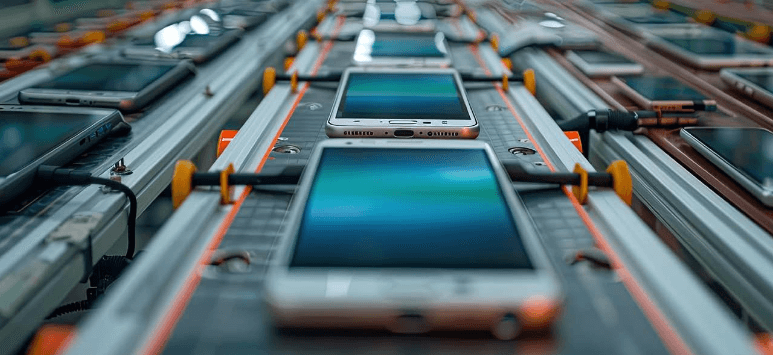Next Shift Will be from ‘Make in India for India’ to ‘Make in India for World’

The Indian electronics industry is booming, offering incredible opportunities for growth. With its global potential, it’s the perfect time for new players to step in and make their mark.
Electronics has become a priority sector for the policy makers. Various schemes such as PLI, SPECS, EMC, MSIPS have yielded unprecedented growth in the electronics manufacturing over the last 10 years.
With electronics output reaching USD 115 billion in FY23-24 and a bold vision to achieve USD 500 billion by 2030, India’s electronics industry is poised to make global footprints. This also opens up the gates for new entrants aspiring to contribute to the growth of the industry.
Zetwerk, a manufacturing unicorn, has also taken strides forward in this revolutionizing industry. During the interview with IGNITO, Rahul Sharma, Co-founder, Zetwerk, reflected on the rapid evolution of the electronics industry and shared insights on its future trajectory.
How promising is the electronics industry in India and what made you double down on it. Also, if you can share your thoughts about making it more lucrative for global players to attract more investment?

Sharma: The Indian electronics industry has been growing at an incredible rate in recent years and has touched the USD 115 billion mark, moving towards USD 500 billion by 2030, and this kind of growth has certainly caught the attention of global champions.
India’s electronics industry is appealing to global players for several reasons. First and foremost is the local demand. India’s population creates a consumer base that’s unmatched anywhere else, even in China (where, by 2030, 25 per cent of the population will be seniors, contributing to a consumer class that grows significantly as almost half of the country’s consumer class growth will come from individuals aged 60 or older). By contrast, India will be home to 357 million young consumers below 30, representing one-fifth of the world’s youth consumer market. This makes India an attractive destination for companies looking to tap into that demand.
Secondly, there’s a global shift happening as companies try to diversify away from China. Thirdly, India has something no other country can match — the availability of labour and the ability to scale operations quickly. India is expected to add 22 per cent of the world’s working-age population by 2031. On top of that, the government has been very supportive, offering various incentives like the PLI scheme, state-level benefits, and subsidies for building out the supply chain infrastructure. When you put all of these factors together, India is at a turning point for global electronics manufacturing. In the future, companies will need to be in India to serve the Indian market and once you’re manufacturing here, you can easily serve the rest of the world too.
Though the electronics industry has witnessed a significant growth, display manufacturing still remains a major concern. What according to you should be done so that display manufacturing in India can be boosted?
Sharma: I think the government is already making some strides in this area, and we’re seeing efforts from industry bodies like ICEA pushing for it. But to really get display manufacturing going in India, we need a bit more momentum from the government to ensure displays are made right here in the country. It’s not an easy task though — it demands a huge amount of investment.
To make this happen, incentives will play a big role. Whether it’s through sales incentives, or providing support for CAPEX (25%) and OPEX through PLI varies from 4-6%, these measures can definitely make a difference. Beyond that, investing in technology and forming strong partnerships, not just for manufacturing but across the entire ecosystem, is crucial.
It’s kind of like building the foundation for a house — it takes time and patience. Though progress might seem slow, all the right pieces are falling into place, and I’m confident that display manufacturing in India will happen sooner than we think.
How do you see Indian electronics industry in the next 5 and fi0 years, how value addition target can be met especially with respect to components and subassemblies?
Sharma: The industry is growing at an incredible pace. Honestly, a few years ago, no one would have expected it to expand this much. Predicting what will happen in the next five or ten years might be tricky, but I’m confident that we’re going to see massive growth in the next three, four, or seven years.
One big shift we’ll see is moving from “Make in India for India” to “Make in India for the world.” That’s definitely going to happen in the near future, but for that, we need to start adding more value to what we produce so that we can cater to a global market.
The good news is that the government’s policies are moving in the right direction. Companies are being incentivized to reinvest in backward integration, and we’re seeing global value chains come to India.
To make this transition successful, we’ll need strong industry support, smart policymaking, excellent execution, and a major push to upskill our workforce, especially when it comes to components and subassemblies.
Zetwerk has expanded across the IT hardware, television, mobile phones, hearable and wearable products segment too. What are the plans for the same?
Sharma: We’re definitely the new kid on the block, considering there are already a lot of players in the market. But the good thing is, the market is growing fast, so there’s plenty of room for everyone.
We’ve been really active in the wearables and hearables space, supplying to some of the biggest OEMs. Our focus now is on exports, and we’re exploring all the opportunities to make that happen.
As for televisions, we got into that about a year ago, and now we’re looking to bring in new customers and form partnerships around new technology so we can offer even better products.
In IT hardware, we’ve been working in the desktop space, and the plan is to move into laptops over the next one to three years. We’re already having some good conversations with customers on that front.
As a manufacturing unicorn, what challenges do you see in the electronics manufacturing sector and how can those be overcome?
Sharma: The electronics industry is well-established, and supply chains have been in place for a long time. But one of the key challenges is helping the industry stay connected and aware of everything happening within the country.
To tackle this, industry bodies like ICEA bring together stakeholders from different parts of the electronics industry to connect with the global value chain. They’re doing a great job, but I think more proactive efforts could make a big difference.
Industry bodies could expand the ecosystem even further, helping companies connect more easily. That way, when someone has a need, they can quickly find someone who has a solution — almost like matchmaking.
Another big challenge, especially as the industry grows, is the need for a large, skilled workforce. We need to focus on training the youth. Fortunately, the government already has a lot of initiatives in place, but it’ll come down to how well we can align investments with ROI through things like subsidies and incentives.
What are your learnings which you would like to share with the new entrants in the electronics and EMS landscape in India?
Sharma: It really depends on the type of industry you’re aiming to serve. If you’re going into the consumer market, scale is everything. You’ll want to focus on sectors that are in their growth phase because breaking into established supply chains is tough. But if you can get into a new supply chain early, it becomes much easier to expand into others down the line.
On the other hand, the industrial sector and exports offer a great opportunity that doesn’t require as much capital investment. What you need here is a strong focus on quality and sourcing capabilities. It’s less about spending big and more about having the right skills and attention to detail.





Terrific paintings! This is the type of information that should be shared around the net. Shame on the seek engines for not positioning this put up upper! Come on over and consult with my web site . Thank you =)